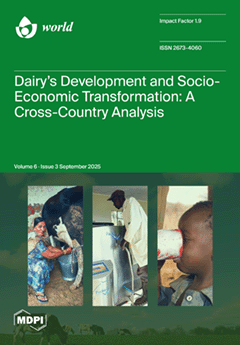This study examines the impact of personal remittances on housing prices in European Union (EU) countries, while also accounting for a broader set of macroeconomic, demographic, and structural variables. Using annual data for 27 EU countries from 2007 to 2022, we employ a
[...] Read more.
This study examines the impact of personal remittances on housing prices in European Union (EU) countries, while also accounting for a broader set of macroeconomic, demographic, and structural variables. Using annual data for 27 EU countries from 2007 to 2022, we employ a comprehensive panel econometric approach, including cross-sectional dependence tests, second-generation unit root tests, pooled mean group–autoregressive distributed lag (PMG-ARDL) estimation, and panel causality tests, to capture both short- and long-term dynamics. Our findings confirm that remittances significantly and positively influence long-term housing price levels, underscoring their relevance as a demand-side driver. Other key variables such as net migration, GDP, travel credit to GDP, economic freedom, and real effective exchange rates also contribute to housing price movements, while supply-side indicators, including production in construction and building permits, exert moderating effects. Moreover, real interest rates are shown to have a significant long-term negative effect on property prices. The analysis reveals key causal links from remittances, FDI, and net migration to housing prices, highlighting their structural and predictive roles. Bidirectional causality between economic freedom, housing output, and prices indicates reinforcing feedback effects. These findings position remittances as both a development tool and a key indicator of real estate dynamics. The study highlights complex interactions between international financial flows, demographic pressures, and domestic economic conditions and the need for policymakers to consider remittances and migrant investments in real estate strategies. These findings offer important implications for policymakers seeking to balance housing affordability, investment, and economic resilience in the EU context and key insights into the complexity of economic factors and real estate prices. Importantly, the analysis identifies several causal relationships, notably from remittances, FDI, and net migration toward housing prices, underscoring their predictive and structural importance. Bidirectional causality between economic freedom and house prices, as well as between housing output and pricing, reflects feedback mechanisms that further reinforce market dynamics. These results position remittances not only as a developmental instrument but also as a key signal for real estate market performance in recipient economies.
Full article




